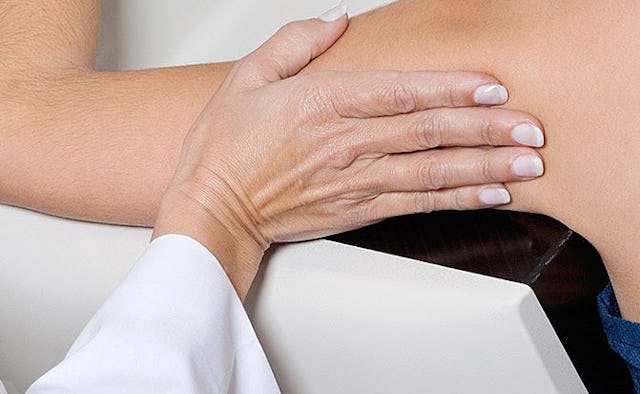Should Women in Their 40s Get Screened for Breast Cancer?

Last week, the U.S. Preventative Services Task Force updated their recommendations on when a woman should start having mammograms. Since this is an issue about which we’d like as much clarity as possible, it makes total sense that things are just as confusing as ever.
Back in 2009, the Task Force came out against regular screening mammograms for women under the age of 50. The recommendation was based on a risk analysis. Despite all those years of “mammograms save lives,” it turned out that was only marginally true if you were a woman under 50. The data indicated that for every one woman saved, 576 women drew a false positive and were forced to undergo additional testing and procedures.
What ensued was an absolute firestorm. Breast cancer advocacy groups were up in arms. Congress got involved. But the recommendation remained unchanged.
Fast forward six years and they have updated their findings to report…nothing different. The recommendation remains that women should begin screening at age 50, and continue to be screened every two years. For women in their 40s, the decision to undergo mammography should be a “personal choice.”
I have no doubt that the Task Force is making their recommendation in the best interests of science. And yet, public health is always one dose science, one dose human nature. They have the science exactly right. They have bungled the human nature.
The problem the Task Force faces is that most people don’t read statistics with the rational side of their brains. Publish a statistic saying that for every 1,000 mammograms given to women under 50, only one woman is saved, and we all see ourselves as that one woman. It’s magical thinking, to be sure, but we can hardly be blamed for it. After all, everyone told us that mammograms were going to save our lives if we started them early. It’s hard to take that back.
Moreover, it’s not like anyone has offered us anything different. Forego the mammogram, get an ultrasound instead. Or a blood test. Hell, stand on your head for two hours a day. Something. But no—the recommendation is to do nothing. Proceed as if we never said that whole thing about beginning mammograms at 40. Carry on.
What kind of choice is that?
Three years ago, I found a lump in my breast. I had two young children at home and a baby on the way. I went in for a mammogram and an ultrasound. Both negative. Great news, the radiologist told me. We don’t see anything. And yet the lump was there, palpable and hard, deep under the surface of my skin. With a strong family history of breast cancer, I was given no choice: it has to come out. When it did, it was over a centimeter long, smooth and rounded. Not cancer.
What keeps me up at night wasn’t the close call, it was the fact that this pebble of not-cancer (a lactating adenoma, to be precise) went completely undetected on both the mammogram and the ultrasound.
I’m painfully aware that mammograms aren’t perfect. But I also know they’re all we have. And until we have something better, I don’t think we should discourage women in their 40s from having a test that just might save their lives.
This article was originally published on